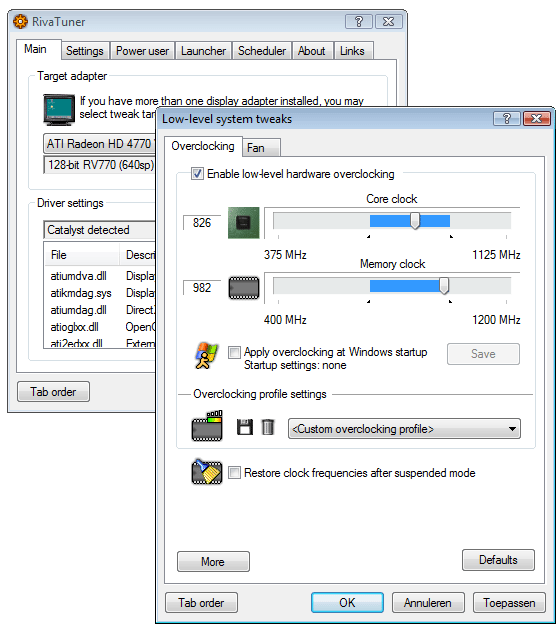The overclocking 101 - The graphics core
The overclocking 101
So here's what we need to do, please download these three files:
Download:
Step 1:
After downloading the software, install Furmark. Furmark is very handy to use to define an overclock. With that application running in a window and Rivatuner next to it, you can gradually increase clock and memory frequency real-time and on the fly, while stressing the GPU fairly harsh.
Some people prefer other software, OCCT GPU stress, Running 3DMark or a game each time after a frequency change. Everybody has his/her own preferences. Just use an application that is hard on your graphics card. Yet for ease of use we recommend Furmark.
Step 2:
Install the latest available Rivatuner (link above at download chapter).
Step 3:
Rivatuner will not support the Radeon HD 4770 (RV740) right after installation. Please drop the 4770 configuration file in Rivatuner's installation directory. x:\Program Files\Rivatuner 2.24
Now you can startup Rivatuner. Mind you that Rivatuner does not (yet) support proper core clock monitoring functions. But overclocking will work properly after you have inserted that configuration file.
We are now ready to start overclocking.
Note -- neither ATI or Guru3D is responsible for a damaged card. Mind you that we've never been able to break a card with an overclock, that doesn't mean it can not happen. You are driving the graphics card closer to it's maximum limit. As such do it wise, do it careful .. but most of all you do it at your own risk.
Starting to overclock / procedure:
First startup FurMark, disable full screen, select stability test, select 640x480, hit GO. This will stress the GPU 100%, leave it running.

Startup Rivatuner, select monitoring (you want to monitor GPU temperatures). The icon with the Chip and magnifying glass

Now click on that little graphics card button and we can start the actual overclocking of GPU core and memory.
Enable low-level hardware overclocking. With the slider we now start to increase the core clock. In Rivatuner increase GPU Core clock in 10 MHz increments. After each incremental clock frequency increase, hit apply.
If you see artifacts either stop Furmark immediately or restart. If you system locks up, restart, repeat procedure and drop down ~25 MHz. Keep monitoring that temperature. Above 90 Degrees C is not okay.

Don't be to afraid about a few system lockups and restarts, really. If you are afraid .. don't overclock. It's not for you my man. It is needed to find the maximum threshold of what you can achieve.
